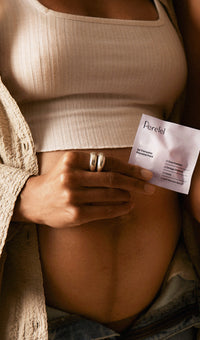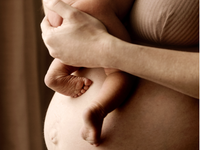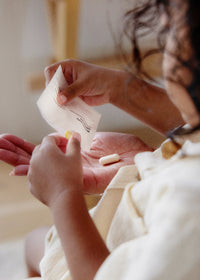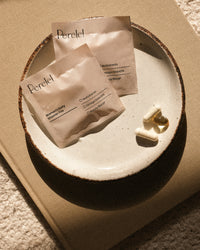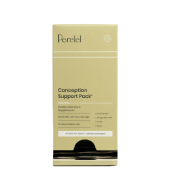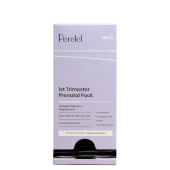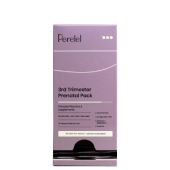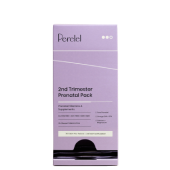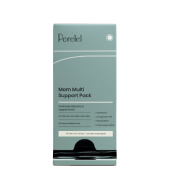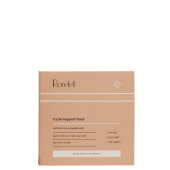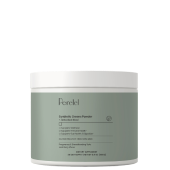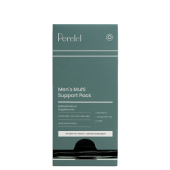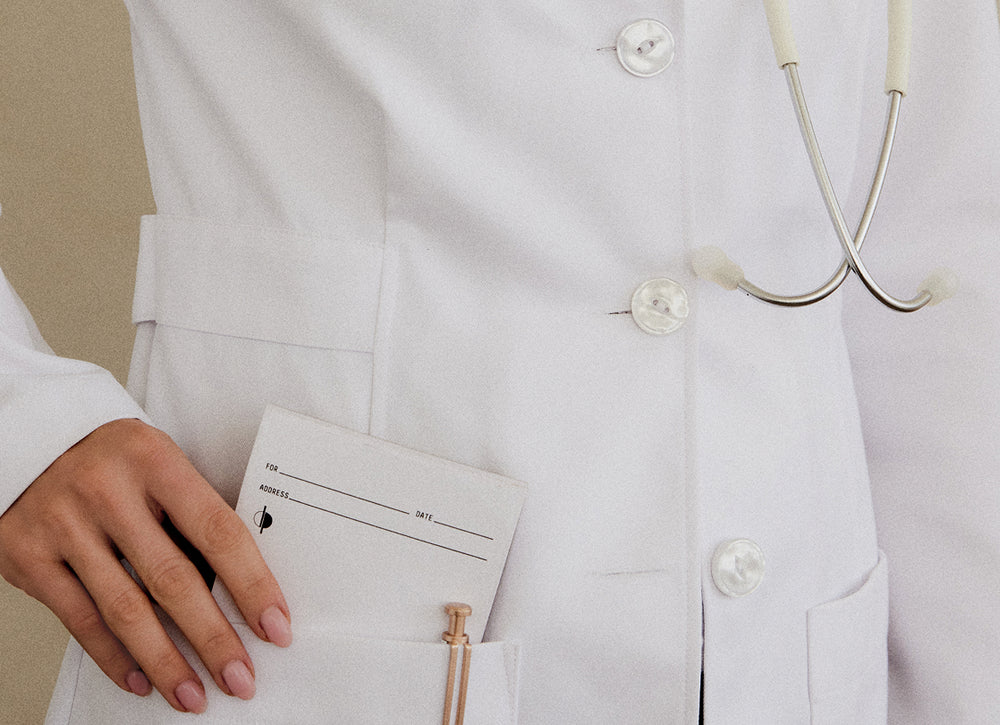|
At a Glance The menstrual cycle has four phases: menstruation (about 3–7 days), the follicular phase (the variable first half of the cycle), ovulation (about 24 hours at mid-cycle), and the luteal phase (typically 11–17 days, averaging around 14). These stages are coordinated by shifts in the hormones estrogen, progesterone, follicle-stimulating hormone (FSH), and luteinizing hormone (LH). Together, they regulate ovulation, uterine lining changes, and common symptoms like cramps, mood shifts, and energy fluctuations. |
When you hear the phrase “menstrual cycle,” do you automatically think of your period? It wouldn’t be surprising—after all, so much of what we’re taught about women’s bodies revolves around the fact that we bleed every month.
But while our period is certainly a crucial barometer for our reproductive (and general) health, our menstrual period isn’t our menstrual cycle. It’s actually just one part of it. Our full hormonal cycle lasts roughly 28 days and consists of four distinct phases: menstruation, follicular phase, ovulation, and luteal phase.
So, when we’re only considering the symptoms leading up to and during menstruation, we’re actually ignoring a pretty sizeable chunk of our hormonal health. When in reality, our routine throughout our cycle actually has a direct impact on our symptoms.
The ebb and flow of our hormones is connected with so much, from our mood to our skin and digestion. As Dr. Caitlin O’Connor, a Naturopathic Doctor who specializes in holistic treatment for women, puts it, “It’s wild in there.”
Yes, our bodies are complicated, but the simple fact is that when we start to live in sync with our cycles, it’s that much easier to balance and anticipate our symptoms. "When people aren’t paying attention to their cycle, it feels like all these random things are just happening to them and they don’t know why,” says Dr. O’Connor. “But when you have this information and can put things into context, it is so empowering.”
Read on to learn more about what exactly is going on in your body during each phase of your menstrual cycle, from hormonal shifts to common symptoms.
While we’re used to centering our cycles around our periods, it’s actually more accurate to center them around ovulation, which is the halfway point. (We’ll get into that in a sec.) It’s also worth noting that most cycle lengths hover around 28 days, but can range anywhere from 23 to 35 days.
As long as the length stays relatively consistent each month, anything within this range is considered normal. On the flip side: If your cycle length is changing a lot from month to month, it might be a good idea to check in with your OB/GYN to rule out a hormonal imbalance.
The four phases of your cycle are as follows:
- Menstrual phase, aka your period. This kicks off your entire cycle and usually lasts 3–7 days.
- Follicular phase (the first half of your cycle). Technically, your period marks the first day of your follicular phase. The follicular phase can be considered a growth phase, a revving engine if you will, which reaches a crescendo with ovulation and cools off through the luteal phase preceding menstruation.
- Ovulation (the halfway point of your cycle). This is your fertility window, and what happens in the days leading up to ovulation usually determines whether your cycle will end in your period or a pregnancy.
- Luteal phase (the second half of your cycle). If ovulation hasn’t resulted in a pregnancy, your body will start preparing for your period, and this shift in your hormones can result in some fatigue (and gnarly PMS symptoms).
Each of these phases is driven by fluctuations in your reproductive hormones, which cause that chain reaction in symptoms in the rest of your body. Let’s dig a little deeper below.

Menstrual Phase
Day 1–5
Your period.
The lining of your uterus thickens throughout your cycle to prepare for a pregnancy, and if that pregnancy doesn’t happen, the lining sheds during your menstrual phase, causing you to bleed. As you kick off your cycle, your estrogen and progesterone levels are typically at an all-time low, which is why you tend to feel super drained as you start your period.
That should start to shift a couple of days in, when estrogen levels start to climb again. (If you’ve ever woken up on Day 3 of your period feeling like a brand new person, you know what we’re talking about.)
Symptom tracker : You probably know the drill here, but just a refresher: particularly in the first couple of days of your period, mild cramps and bloating are totally normal. (Prostaglandins are hormone-like lipids that work to help your uterus shed its lining, and when they help those muscles relax, it can lead to cramping and digestive changes.)
Note that your nutrient levels can play a crucial role in your discomfort level. “Typically during the menstrual flow, that’s a time when people might be more fatigued, especially if they’re low on iron and zinc,” Dr. O’Connor advises.
Low iron levels can also contribute to more serious menstrual cramps, so supplementation might be helpful, particularly if you’re someone with iron-deficiency anemia, a heavy flow, or both.
Your period blood is also a good biomarker to keep an eye on, and changes throughout your menstrual cycle aren’t necessarily cause for concern. At the height of your period, it’s normal for your blood to be bright red, and you might pass some small clots. Towards the end of your period, the blood might turn brown, which just indicates that it’s a little bit older and has oxidized a bit.
Follicular Phase
Day 1–14
The “growth” phase of your cycle.
Let’s get technical for a second: The term “follicular” refers to the follicles, which are small, fluid-filled sacs in the ovaries. Each follicle contains one immature egg and there are thousands of follicles in the ovaries.
During the follicular phase, the brain sends a message to the ovaries via a hormone called follicle stimulating hormone or FSH that brings a pool of those eggs out of hibernation every month.
“This cohort of follicles has been slowly maturing over the last three to four months, and then eight to 20 of them become fully mature during the follicular phase of the menstrual cycle, says Dr. O’Connor. “Of the follicles that mature, one of them becomes what’s called the dominant follicle.”
Still with us? Let’s continue: As that egg is chosen, the other follicles stay the same size and the dominant follicle grows and grows and produces more estrogen. That estrogen, when it reaches its peak, triggers a release of what’s called luteinizing hormone, or LH.
“When people are using ovulation strips to test, they are measuring the luteinizing hormone,” notes Dr. O’Connor. “That’s the hormone that is secreted by the brain that triggers the release of the egg from the follicle.”
Interestingly, the follicular phase can be variable in length for each person. “So, for example, people with PCOS or other imbalances spend a long part of their cycle in the follicular phase.” This is unlike the luteal, or postovulatory phase, which is almost always 10–14 days, Dr. O’Connor explains.
Symptom tracker : As your progesterone and estrogen levels steadily increase throughout your follicular phase, you can expect to notice a boost in energy and mood, and your libido might also be at an all-time high, especially as you approach ovulation. Word to the wise: This is a good time to lean into more intense exercise and power through your to-do list.
Ovulation Phase
Day 14
A mature egg is released from the ovary.
Your estrogen levels peak about halfway through your cycle, triggering a spike of LH, which triggers the release of the mature egg from its follicle, down the fallopian tube, towards your uterus. This process occurs over the course of 12 to 24 hours.
If you’re trying to conceive, note that the week leading up to ovulation is known as your fertile window. (If you’re not trying to conceive, it’s probably not a bad idea to be conscientious of this either way.)
Symptom tracker : “During ovulation oftentimes libido is higher, energy is higher, creativity is higher, mood is at its best, all because nature’s trying to trick you into going out and making a baby,” notes Dr. O’Connor. You may notice that in the days leading up to ovulation, your discharge is stickier and viscous (all the better to catch sperm, if you’re trying for a baby). It’s also not abnormal to experience some minor cramping and light spotting during this time.
Luteal Phase
Day 15–28
The uterus prepares for a possible pregnancy.
After ovulation, we enter the second half of our cycle, known as the luteal phase. “The luteal phase gets its name because once the follicle releases the egg, there’s a leftover structure that is called the corpus luteum,” explains Dr. O’Connor. “The job of the corpus luteum is to produce progesterone. One of the main purposes of progesterone is to cause appropriate blood flow and nourishment to the uterine lining, so that if there’s a fertilized egg, it has a home to go to.”
Meanwhile, estrogen levels drop off immediately after ovulation, before steadily rising again. “One of the main purposes of estrogen is to build a thick uterine lining, so estrogen lays down the bricks of the uterus, and progesterone lays down the cement,” she says.
Both of these hormones peak mid-luteal phase, right around the time that implantation most commonly occurs, about eight to 12 days after ovulation. If you’re not pregnant, estrogen and progesterone levels will drop off and the lining of the uterus will start to shed, triggering your period.
Symptom tracker : Suffice it to say that there’s a lot happening with our hormones at this time, which is why we tend to notice some of the most tell-tale menstrual symptoms during the latter half of our cycles, especially as we get closer to our menstrual phase (hello, PMS).
Progesterone is a calming hormone to begin with, so you might notice some fatigue even in the beginning of your luteal phase. And once your progesterone and estrogen levels start to dip? “People will be more moody, more fatigued, and maybe less inclined to be social,” says Dr. O’Connor.
“It takes extra calories to build a uterine lining, so some people will notice that they are hungrier during their luteal phase,” she says. “Try to balance the blood sugar and eat more protein and complex carbohydrates during the luteal phase as it can be helpful with sugar cravings.”
And then we arrive at premenstrual syndrome, or PMS: Two to three days before our menstrual cycle, when the body gets the message no egg has been fertilized, the biggest dip in estrogen and progesterone occurs, which is when many people can experience PMS symptoms: Mood swings, bloating, skin changes, breast tenderness, and headaches are all commonly experienced during this time.
As you transition back into your menstrual phase, those hormone-like prostaglandins will spring back into action, causing your uterus to contract, leading to cramps and bleeding, and bringing us to Day 1 of your next cycle.
To counteract all the action happening internally during your luteal phase, the best approach is to go slowly: Choose low-impact exercise, enjoy comforting (but nutritionally balanced) foods, and engage in habits that allow you to treat your mind and body with kindness.
How do I track my cycle?
You can sign up for a cycle tracking app or can go fully analog; the benefit of this is that it's an opportunity to journal your symptoms, too.
Grab a paper calendar and mark the first day of your period with an “x.” Mark every day of your period after that with an “x.” To get a rough idea of when you might be ovulating, count 14 to 15 days backwards from the first day of your period. You can mark that day with an “O.”
Keep in mind: This is an unreliable way to tell when you’re fertile and should not be used as a birth control method. Check out our guide on birth control options, including fertility awareness methods, to learn how to accurately identify when you’re ovulating.
Every day, reflect on how you’re feeling. Then grab your calendar and jot down just a few words for each of these categories: mood, energy, and sex.
What are some signs that my cycle is irregular?
We’ll start off with a reminder that everyone’s body is different, so your version of a normal menstrual cycle might look different than someone else’s. That said, there are a variety of factors that can throw your cycle off-kilter: stress, diet, hormonal birth control, and underlying hormonal conditions like PCOS and endometriosis, to name a few.
Here are a few warning signs that it might be time to check in with a doctor:
-
Irregular periods or inconsistent cycles. Note that your period can vary slightly from month to month, both in length and menstrual flow. But if you’re skipping periods or noticing major changes in your cycle length, like going from a 28-day cycle to a 21-day cycle to a 35-day cycle, you’ll want to check in with your physician to check rule out any underlying issues that are impacting your hormone levels.
- Very heavy or very painful periods. Many of us are taught to resign ourselves to painful PMS symptoms, but the truth is that if we’re really suffering, it can be a sign of an imbalance. Dysmenorrhea is the medical term for periods that are painful enough to interfere with your daily life, and can be caused by hormonal imbalances or conditions like endometriosis.
- Your menstrual flow can also indicate if something is off-balance. Typically, you can expect to lose up to 1/4 cup of blood during your menstrual phase. But if you’re soaking through a tampon or overflowing a menstrual cup each hour, you might have menorrhagia, the medical term for heavy or prolonged menstrual bleeding. This is another good reason to check in with a doctor, as it’s often caused by a hormonal imbalance, or a uterine issue.
- Your menstrual flow can also indicate if something is off-balance. Typically, you can expect to lose up to 1/4 cup of blood during your menstrual phase. But if you’re soaking through a tampon or overflowing a menstrual cup each hour, you might have menorrhagia, the medical term for heavy or prolonged menstrual bleeding. This is another good reason to check in with a doctor, as it’s often caused by a hormonal imbalance, or a uterine issue.
- Excessive spotting. It’s normal to experience spotting in the days leading up to and after your period, as well as halfway through your cycle, during ovulation. But if you’re noticing blood when you wipe throughout the entirety of your cycle, you’ll want to make an appointment with your doctor to see what’s going on.
- Skin or hair changes. It’s not uncommon to experience some mild breakouts throughout your cycle, especially in the days leading up to your period, but if you’re battling excessive hormonal acne or other physical symptoms like hair loss, that might indicate a hormonal imbalance.
- Changes in menstrual blood. A healthy period usually produces bright red menstrual blood and might look pink, slightly brown, or purple-ish in the later days of your menstrual phase, when the blood has been sitting in your uterus for a bit longer. Sometimes, light pink period blood indicates lower levels of estrogen, which is an occasional side effect of hormonal birth control (which suppresses estrogen) or an early precursor of menopause.
- Orange discharge that is accompanied by a strong odor, burning, or itching can indicate an infection. If you’re passing large, painful clots, it can be a sign of menorrhagia. These are all good reasons to get checked out by your physician.
The first step to a better cycle is understanding exactly what’s going on in your body, and if you’ve made it here, then you’re already on the right path.
Frequently Asked Questions
What are the four menstrual cycle phases?
The four phases are menstruation, follicular, ovulation, and luteal. Each stage is defined by specific hormonal changes that drive symptoms and fertility patterns.
How long is the luteal phase?
The luteal phase typically lasts about 11–17 days, with 14 days being the most common average. A shorter or significantly longer luteal phase can affect fertility.
When does ovulation happen?
Ovulation occurs around mid-cycle. In a 28-day cycle, that’s usually around day 14. Your fertile window is the five days before ovulation plus the day of ovulation itself.
Is a 3-day period normal?
Yes. Most menstrual periods last between 3 and 7 days. Some people have shorter flows and others longer; both are generally considered normal if consistent.
The Takeaway
Your menstrual cycle is more than just your period. It is a rhythm guided by shifts in estrogen, progesterone, FSH, and LH, with each phase influencing how you feel and function. By understanding the changes in your body, you can track patterns, anticipate symptoms, and make choices that support your overall health.
Curious what your body needs right now? Take our 60-second quiz to create a personalized, doctor-backed routine tailored to your cycle stage.
References:
- Menstruation and Menstrual Problems. U.S. Department of Health and Human Services. NICHD. Eunice Kennedy Shriver National Institute of Child Health and Human Development.
- Reed BG, Carr BR. The Normal Menstrual Cycle and the Control of Ovulation. . In: Feingold KR, Anawalt B, Blackman MR, et al., editors. Endotext . South Dartmouth (MA): MDText.com, Inc.; 2000-.
- Dasharathy SS, Mumford SL, Pollack AZ, Perkins NJ, Mattison DR, Wactawski-Wende J, Schisterman EF. Menstrual bleeding patterns among regularly menstruating women. Am J Epidemiol. 2012 Mar 15;175(6):536-45. doi: 10.1093/aje/kwr356. Epub 2012 Feb 20. PMID: 22350580; PMCID: PMC3299419.
This article is for informational purposes only. It is not, nor is it intended to be, a substitute for professional medical advice, diagnosis, or treatment and we recommend that you always consult with your healthcare provider. To the extent that this article features the advice of physicians or medical practitioners, the views expressed are the views of the cited expert and do not necessarily represent the views of Perelel.





